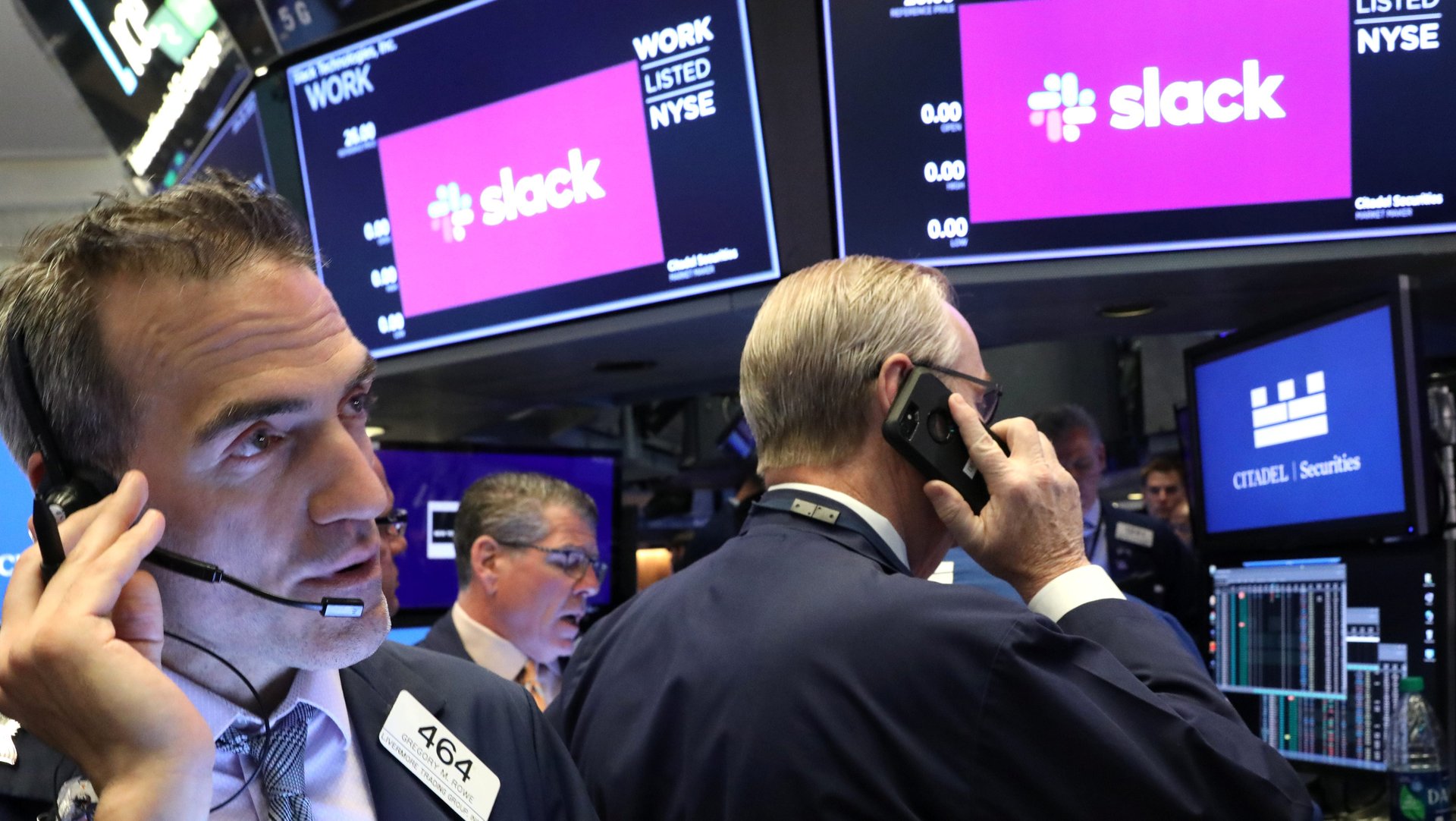Slack’s direct listing is a hit
As with Slack’s approach to enterprise software, its stock market debut was unconventional, unexpected, and delightful for those in the know. Shares surged in early trading well beyond the $26 reference price the company had estimated prior to its trading, hitting $42 at one point.


As with Slack’s approach to enterprise software, its stock market debut was unconventional, unexpected, and delightful for those in the know. Shares surged in early trading well beyond the $26 reference price the company had estimated prior to its trading, hitting $42 at one point.
“It’s a big day, it’s a nice moment,” said Stewart Butterfield, CEO and cofounder, on CNBC today (June 20.) He said his team spent weeks writing thank you notes to send to customers before its debut.
Slack chose to list its shares through a direct listing. In contrast to a conventional initial public offering (IPO), Slack issued no new shares or raised capital for corporate coffers. Instead, the company’s existing shareholders — employees, founders, and early investors—sold their shares directly to investors. That avoided an expensive roadshow, an investment bank tradition for aspiring public companies to be shopped around to potential institutional buyers before trading starts on the stock exchange.
Instead, it opted for “Investor Day.” The May 13 event was live-streamed to anyone interested in buying the stock. The company’s reference price, an estimate of the stock value set by the New York Stock Exchange was $26 (paywall). That valued the company at $15.7 billion. But early investors pounced, sending the stock up as much as 62% from that level in early trading on Thursday.
That’s likely just the beginning. Slack is now used by more than 500,000 organizations, 18% of which pay for the service (rather than use a free version), including at least 65 companies in the Fortune 100, according to Slack’s S-1 filing (pdf). Its revenue rose from $105.2 million in its fiscal year 2017 to $400.6 million in fiscal year 2019, which ended on Jan. 31. Even at that growth pace, argued Butterfield, the company has barely scratched the surface. “There’s 10 million daily active users, but a couple hundred million people whose working lives are mediated by email,” he said on CNBC. “They would all be better off with Slack or something like it.”
Over the last decades, large enterprises have steadily moved their spending into the cloud with services such as Slack. Buying software-as-a-service, rather than running one’s own servers, remains just 25% of enterprise software budgets, according to Okta, an identity management company. Enterprises are now loading up on new apps, and Slack is a major beneficiary. More than two-thirds of Office 365 customers, for example, had duplicative apps in chat and video, according to Okta. About 28% were using Slack, and 24% were using Zoom for video conferencing. Okta expects this percentage to grow as teams demand the best software rather than bundled offerings.
Slack’s meteoric rise belies the challenge it faces. Slack could find itself edged out of the enterprise if it fails to translate its success with tech-savvy teams into traditional corporate environments. Microsoft’s rival Teams product may still find purchase. But for now it’s Slack’s race to lose.
Whatever happens, the floodgates are now officially open. Slack’s embrace of the direct listing is significant, following Spotify in April 2018, with its CFO declaring a success a few months later in a blog post titled “IPOs Are Too Expensive and Cumbersome.” Venture capitalist Bill Gurley of Benchmark argues 100% of IPOs should be conducted this way. “In many ways, the “direct listing” is just a modified form of the auction model used by Google and Netsuite,” he tweeted on June 20. “We really should move away from the archaic and nepotistic process used in a traditional IPO, and embrace a modern algorithmic approach. It’s pretty straightforward.”
Financial professionals still disagree. Direct listings, asserts John Mullins, an associate professor at London Business School, make sense for the special cases: well-known, cash-rich companies that don’t need the money and can afford to list shares without raising cash. For the vast majority of companies without a public following, arcane products, and less stellar financials, the IPO route will run through Wall Street. Investment bankers are still best-suited to make the case to institutional investors. “Every company would like to do a direct listing,” says Mullins, “but most companies can’t.”